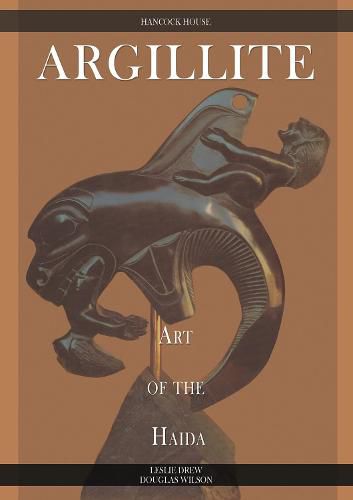Readings Newsletter
Become a Readings Member to make your shopping experience even easier.
Sign in or sign up for free!
You’re not far away from qualifying for FREE standard shipping within Australia
You’ve qualified for FREE standard shipping within Australia
The cart is loading…






This title is printed to order. This book may have been self-published. If so, we cannot guarantee the quality of the content. In the main most books will have gone through the editing process however some may not. We therefore suggest that you be aware of this before ordering this book. If in doubt check either the author or publisher’s details as we are unable to accept any returns unless they are faulty. Please contact us if you have any questions.
An exploration of the art of the Haida, an indigenous people of the Pacific Northwest Coast of North America. Their main territory is the archipelago of Haida Gwaii in northern British Columbia, Canada. Haida society continues to produce a robust and highly stylized art form, a leading component of Northwest Coast art. In particular, this work explores the Haida carvings created from a type of a hard, fine black silt argillite (a fine-grained sedimentary rock composed predominantly of indurated clay particles), sometimes called ‘black slate.'Haida argillite carving has captured the interest of non-Indigenous buyers and collectors for over a century, but only in the past few decades have a handful of students of Northwest coast art and culture attempted to focus systematically upon the vital attributes of this unique aesthetic adventure. This publication is an ambitious yet thoroughly satisfying undertaking that can be used as an illustrative guide for the modern carver, for the collector who has helped to sustain the art for many years, and for the novice who wants an introduction to this important art form. This book is the author’s attempt to present for a general audience the artistic and historical significance of argillite. They have chosen illustrations from as many sources as possible. The particular panel pipes, miniature poles, bowls, dishes, boxes and figurines from the glorious past and the highly-promising present are what they regard as outstanding specimens of the art. In searching for examples the authors visited the National Museum of Man at Ottawa, and several other Canadian museums. They also visited museums in the United States, and the British Isles.
$9.00 standard shipping within Australia
FREE standard shipping within Australia for orders over $100.00
Express & International shipping calculated at checkout
This title is printed to order. This book may have been self-published. If so, we cannot guarantee the quality of the content. In the main most books will have gone through the editing process however some may not. We therefore suggest that you be aware of this before ordering this book. If in doubt check either the author or publisher’s details as we are unable to accept any returns unless they are faulty. Please contact us if you have any questions.
An exploration of the art of the Haida, an indigenous people of the Pacific Northwest Coast of North America. Their main territory is the archipelago of Haida Gwaii in northern British Columbia, Canada. Haida society continues to produce a robust and highly stylized art form, a leading component of Northwest Coast art. In particular, this work explores the Haida carvings created from a type of a hard, fine black silt argillite (a fine-grained sedimentary rock composed predominantly of indurated clay particles), sometimes called ‘black slate.'Haida argillite carving has captured the interest of non-Indigenous buyers and collectors for over a century, but only in the past few decades have a handful of students of Northwest coast art and culture attempted to focus systematically upon the vital attributes of this unique aesthetic adventure. This publication is an ambitious yet thoroughly satisfying undertaking that can be used as an illustrative guide for the modern carver, for the collector who has helped to sustain the art for many years, and for the novice who wants an introduction to this important art form. This book is the author’s attempt to present for a general audience the artistic and historical significance of argillite. They have chosen illustrations from as many sources as possible. The particular panel pipes, miniature poles, bowls, dishes, boxes and figurines from the glorious past and the highly-promising present are what they regard as outstanding specimens of the art. In searching for examples the authors visited the National Museum of Man at Ottawa, and several other Canadian museums. They also visited museums in the United States, and the British Isles.